10 best trees to grow in pots — to elevate patios, porches, and more
We’ve rounded up the very best trees to grow in pots, plus tips on how to look after them


The best trees to grow in pots are those that are beautiful and not too tricky to grow. Plus, they can create valuable privacy for your outdoor living space.
With help from gardening experts, we’ve rounded up ten gorgeous varieties perfect for patios and more. Whether you’re looking for fruit, flowers, or simply fabulous foliage, you’ll find a suitable match for your yard from this list.
Just like when picking out the best indoor plants, knowing how to care for different potted tree varieties is important, too. So, you’ll also find plenty of practical tips on maintenance below, to keep your display looking its best.
The best trees to grow in pots outdoors, and how to care for them
Growing compact tree varieties in containers is the perfect solution if you’re looking to elevate a small garden. Many will thrive in this environment with the right care, and it offers flexibility, too, as you can move them as you wish.
1. Japanese Maple
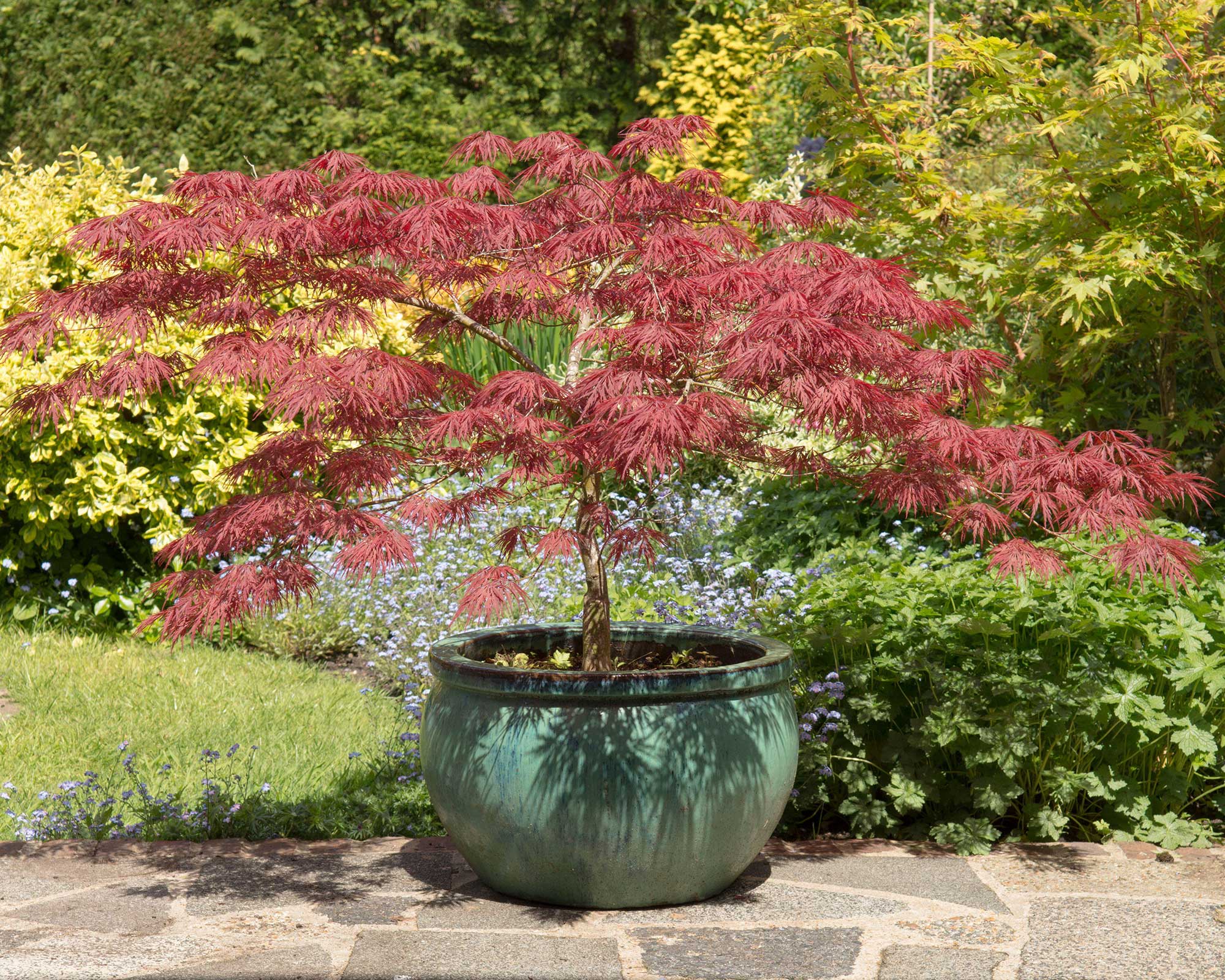
Available in a range of hues spanning bright red, lime green, and deep purple, Japanese maples are one of the best trees to grow in pots if you’re looking for colorful foliage. They are ideal for patios with a Japanese garden influence, and work beautifully alongside a small pond or water feature.
Anna Ohler, the owner of Bright Lane Gardens nursery, says, “For growing Japanese maples in outdoor pots, it is important to choose a container large enough to accommodate the tree's root system and provide stability. A pot with a diameter of at least 18 to 24 inches is recommended for young trees, while more mature specimens may require larger containers. Any pot should have at least three to four holes for adequate drainage.”
Anna recommends placing these trees in dappled shade to prevent leaf scorch. Use a well-draining, acidic potting mix, she says. This should be kept consistently moist, but not waterlogged.
Get small space home decor ideas, celeb inspiration, DIY tips and more, straight to your inbox!
We like the look of this Coast of Maine acidic organic soil from Amazon. Try mixing it with a bit of general-purpose potting soil to get the balance just right.
For deep-red leaves, try the “Bloodgood” variety, available at Nature Hills. “Sango Kaku”, also from Nature Hills, is another popular pick and has coral-colored bark.
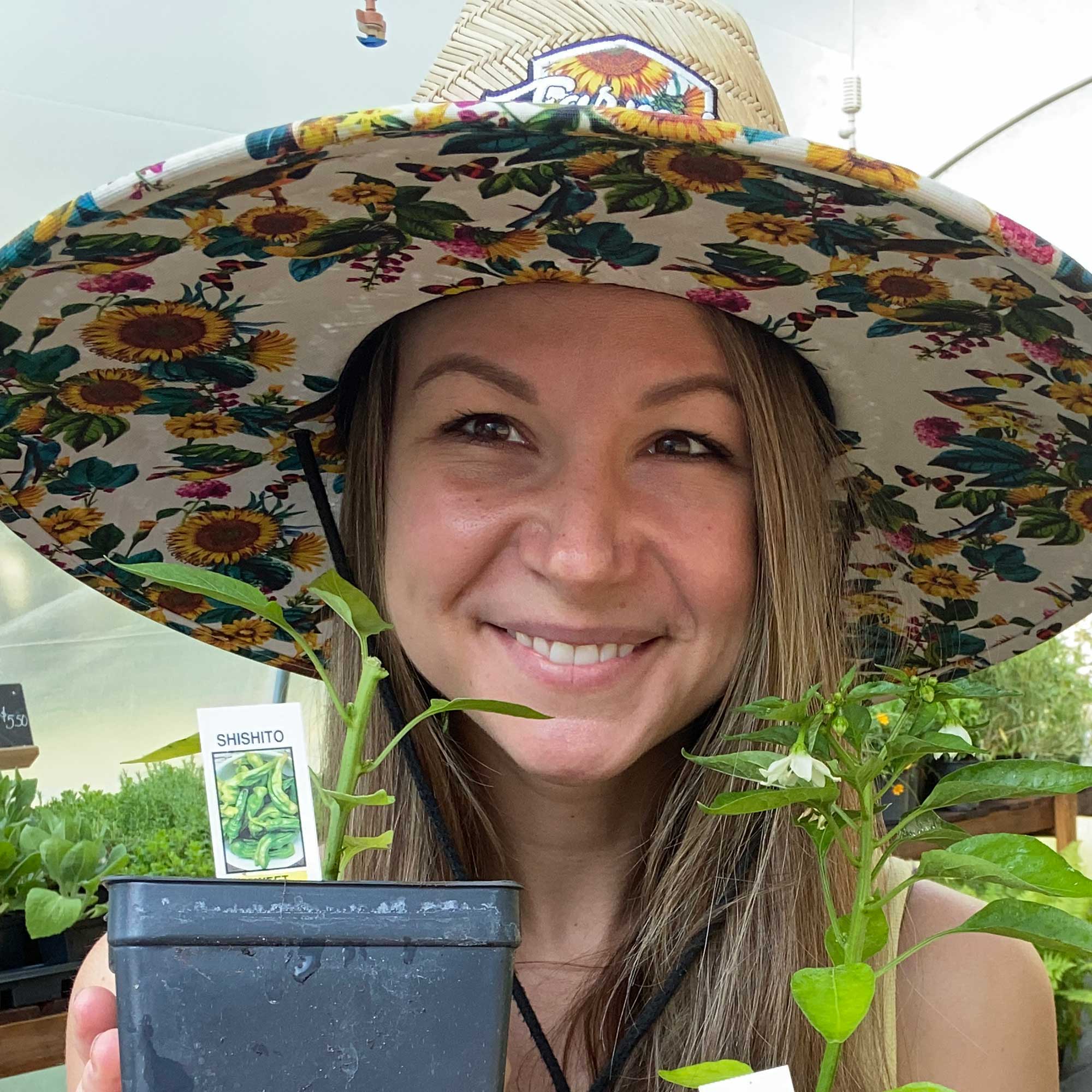
Anna is an avid plant hobbyist and the owner and operator of Bright Lane Gardens, a boutique plant nursery in Northern Michigan. With over a decade of experience in gardening and landscaping, she takes every opportunity to share her knowledge on all things plant-related. She also runs the company's YouTube channel, which is full of practical advice.
2. Citrus
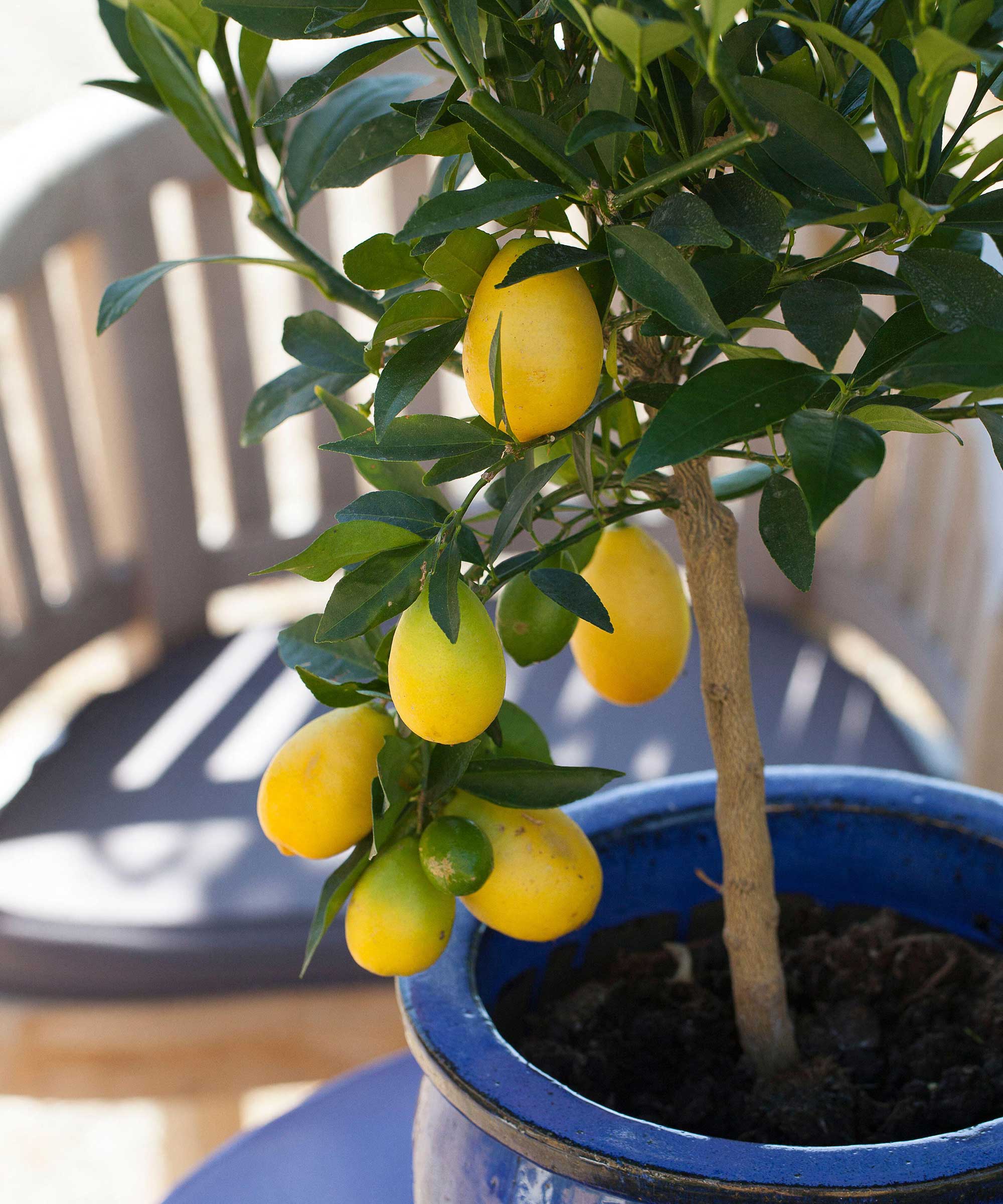
Diane Kuthy, the founder of How To Grow Everything, says, “A wide variety of citrus trees, from lemons to oranges, can be grown in pots without much fuss.”
They need warm climates to stay outdoors all year long, she notes. Otherwise, you can bring your citrus tree indoors for the cold parts of the year to protect it from frost. They make a lovely addition to a sunny conservatory.
“Citrus trees grown in pots will not grow much larger than the pot can accommodate,” says Diane. “If you wish to have a larger citrus tree, place your tree in a larger pot – and vice versa. At a minimum, I suggest nothing smaller than an 8-to-16-gallon pot to start and eventually moving up to a 20-gallon pot (about half of an oak whiskey barrel).
“Citrus trees make the absolute perfect porch or deck potted tree,” Diane continues. They’re also wonderful when used to flank the entrances of garden areas, driveways, or walking paths, she adds.
She also suggests planting a flowering ground cover (like creeping thyme) at the base of your citrus tree pot. This will help retain moisture and add a beautiful design to your potted plants. “This is one of my favorite things to do with potted trees because I just love the look of pink flowers ‘overflowing’ from the pot,” she says.
Try the Meyer lemon tree, available from Fast Growing Trees, which has good heat and cold tolerance.

Diane Kuthy is the founder and lead plant expert at How To Grow Everything, a collection of comprehensive grow guides for every plant and vegetable. Diane has over 10 years of gardening experience and she currently manages a 5-acre farm, a four-season greenhouse, over 50 perennial fruit and vegetable varieties, and a large indoor plant conservatory.
3. Olive
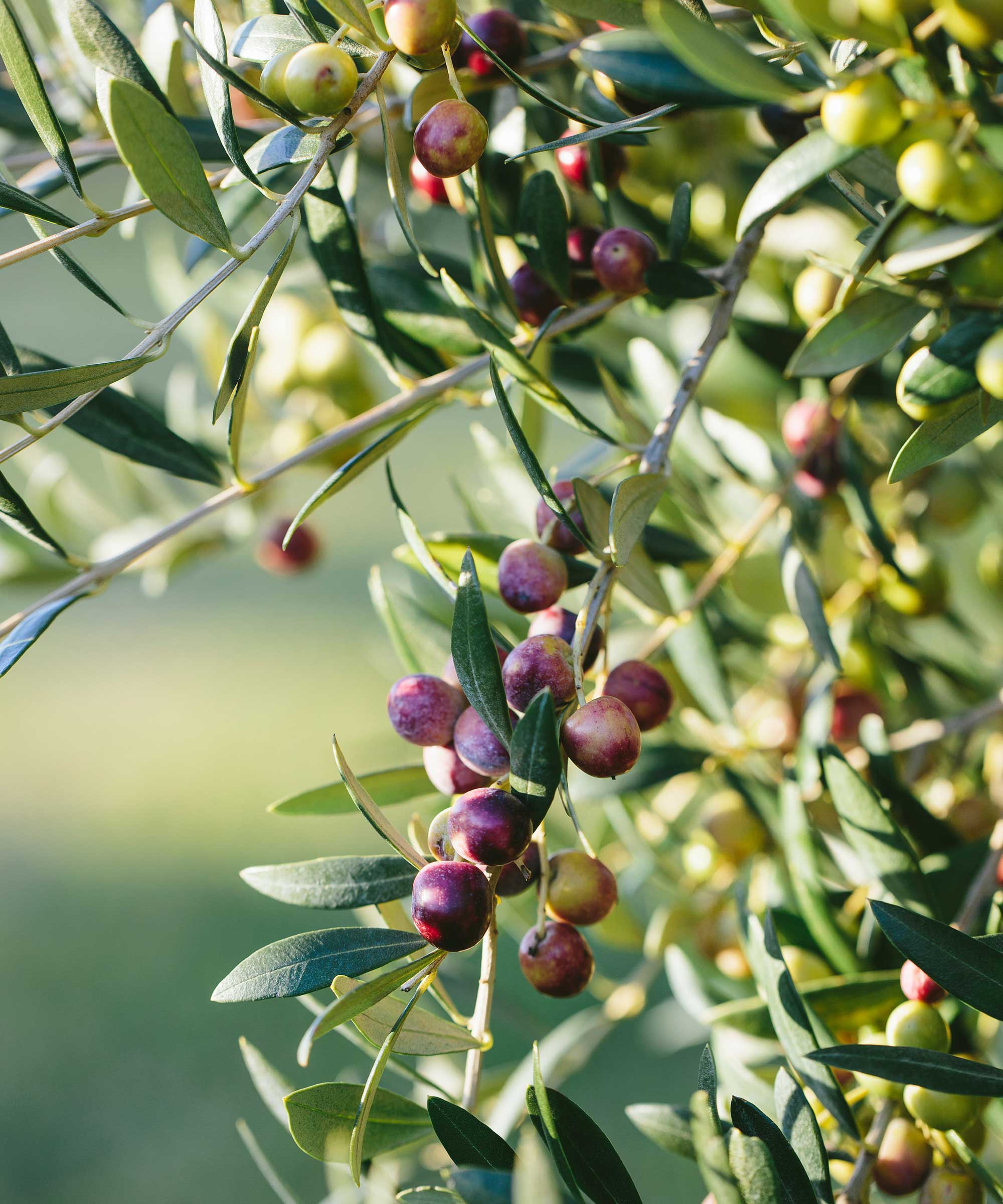
Dave Sheridan of Ascension Tree Care recommends the Arbequina olive tree as one of the best trees to grow in pots. They’re cold-tolerant and drought-hardy, he says, plus, they are able to produce viable fruit within two to four years.
These silvery-green-leaved trees are a great match for Mediterranean garden ideas in hardiness zones 8–11. Keep them somewhere sunny and sheltered, and allow the soil to dry out a little between waterings.
They can also be grown indoors year-round if conditions are right: they need plenty of sun, regular watering, and good drainage, Dave says.
You can shop for Arbequina olive trees at Fast Growing Trees.
4. Dwarf apple

Diane says, “One of my absolute favorite trees to plant in pots is a small dwarf apple tree. To me, there is nothing more fabulous than picking an apple off of a potted tree that is pruned to only about 5 to 6 feet tall. I have a dwarf 'Granny Smith' apple tree that is potted and placed in the middle of my children's play area, but they can also be used as centerpieces of other landscaped areas or even on a large deck or patio.”
Be sure to choose a variety grown on a mini-dwarf rootstock (like M.27 or similar), with good disease resistance, that’s appropriate for your growing zone, Diane says. “You'll also need a fairly large pot (at least a 20-gallon) to accommodate the apple tree’s extensive root system."
For narrow spaces, try a columnar apple tree, such as “Scarlet Sentinel” from Fast Growing Trees. These have an upright growth habit with hardly any branches at all.
You could also consider the "Cinderella" crab apple, as Dave recommends, which thrives in hardiness zones 4–9 and can reach heights of 8 feet.
Apples need a good amount of sun to thrive, as well as well-drained soil. Note, too, that many varieties of apple trees need a pollinating partner in order to bear fruit.
5. Bay laurel
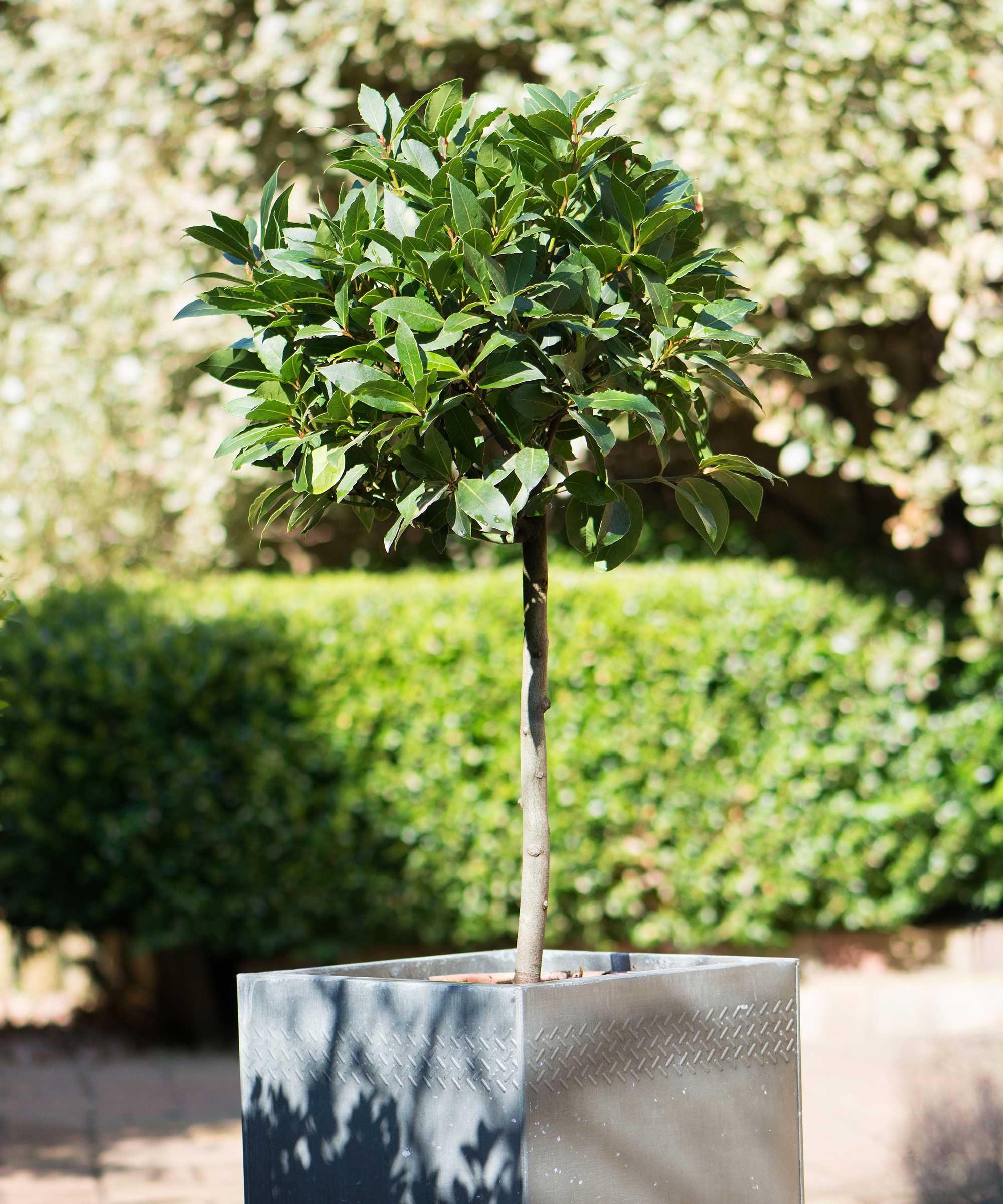
Bay laurels, available at Fast Growing Trees, are well-favored for their fragrant, evergreen leaves, which can be used as a cooking spice. They can be grown indoors or out (they make a lovely addition to a herb garden), but need plenty of sun to flourish. Due to their dense canopy, they are good for improving privacy in gardens.
Like olives, they are drought-tolerant. Allow the soil to dry out slightly before watering them again. Proper drainage is crucial – lifting your pot up onto pot feet, available from Amazon, will reduce risks of waterlogging if you’re keeping yours in your yard.
6. Dwarf spruce
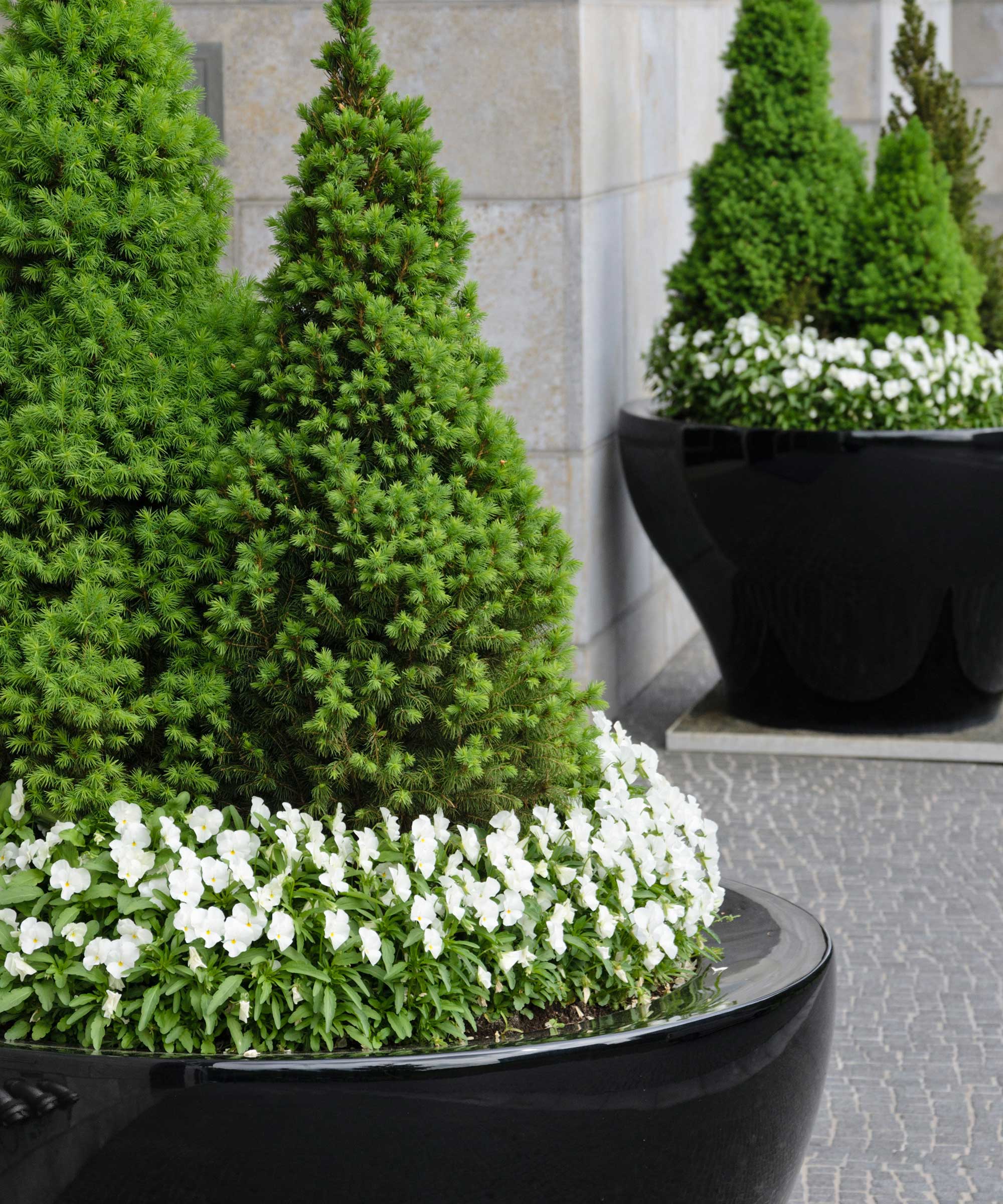
Anna recommends dwarf spruces as some of the best trees to grow in pots. “These are compact, slow-growing evergreens that retain their foliage year-round, adding greenery and structure to outdoor spaces,” she says. “They are suitable for small gardens, patios, or balconies and require minimal maintenance.”
Examples include the dwarf Alberta spruce (available at Nature Hills) and the dwarf blue globe spruce, available from Fast Growing Trees.
Anna recommends placing dwarf spruces in a location with partial to full sunlight, depending on the specific variety. “Water regularly, keeping the soil evenly moist but not waterlogged.
“Choose a container with a diameter of 18 to 24 inches to provide ample space for the tree's root system. Make sure the pot you choose has good drainage to prevent root rot.”
7. Dwarf hinoki cypress

Dwarf hinoki cypress trees, available from Fast Growing Trees, are another recommendation from Anna, with the same evergreen benefits as dwarf spruces.
Slow-growing, neat and compact (growing up to 6 feet when mature), they look stunning in a pair to flank a front door design. Water regularly during dry periods, and ensure they’re somewhere with full to partial sun for the best results.
Anna highlights that most evergreens are susceptible to salt damage. “If you live in a northern region that gets snow, ensure your potted tree is protected from road spray or plowed snow, as the salt will quickly damage the tree's foliage,” she advises.
8. Magnolia “Stellata”
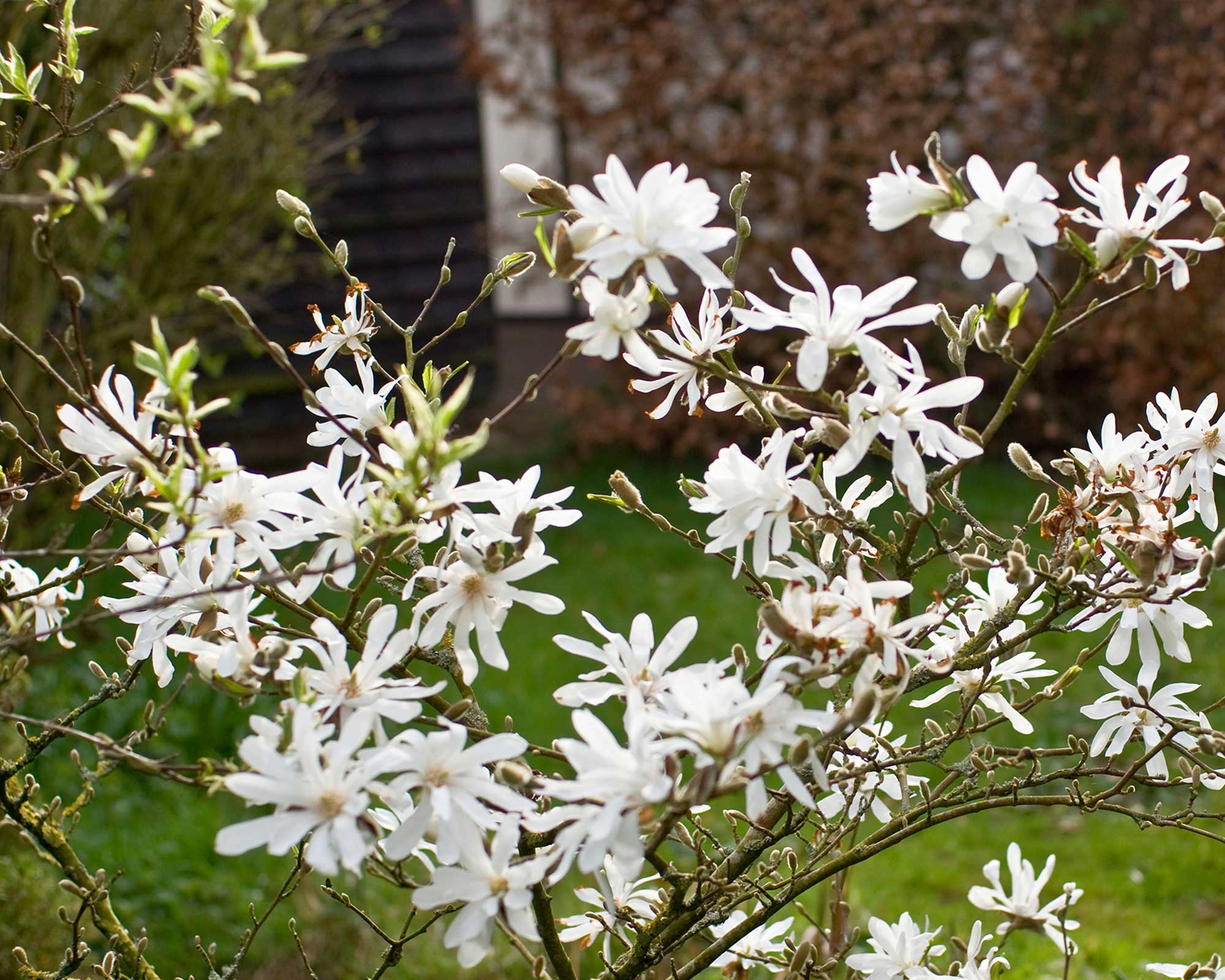
This is a pretty option with star-shaped, delicate blooms that steal the show in a spring garden. Although it makes a good deciduous small tree for a garden border, it can also be grown in a large container with well-draining soil.
“Royal Star”, available from Nature Hills, flowers slightly later than other varieties which helps it resist frost damage. It’s suitable for USDA hardiness zones 4 through 9. Keep it somewhere sheltered from strong winds, in full or partial sun.
9. Ornamental Cherry
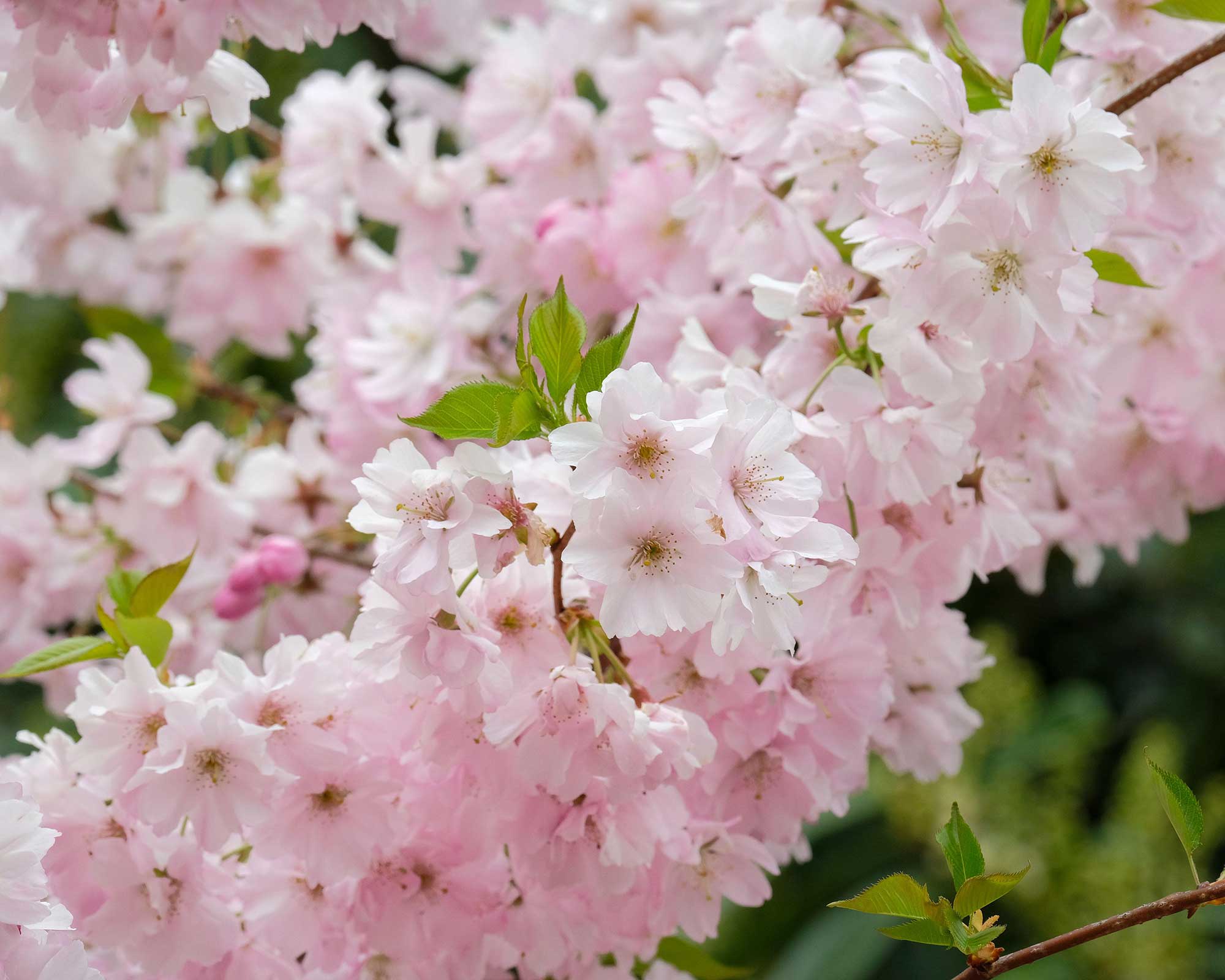
Ornamental cherry trees also have beautiful springtime blossoms, and some compact varieties, such as “Little Twist® Fuji”, are suitable for container growing in small spaces.
Dave notes that weeping cherries can also be grown this way, however they require a large pot to accommodate their root balls. “It’s also important to understand that these cherries will grow to a fairly large size and will require re-potting,” he adds. “They prefer full to partial sun and require well-drained soil.”
The “White Snow Fountains®” weeping cherry, from Nature Hills, is particularly compact and has beautiful fall foliage.
10. Fig
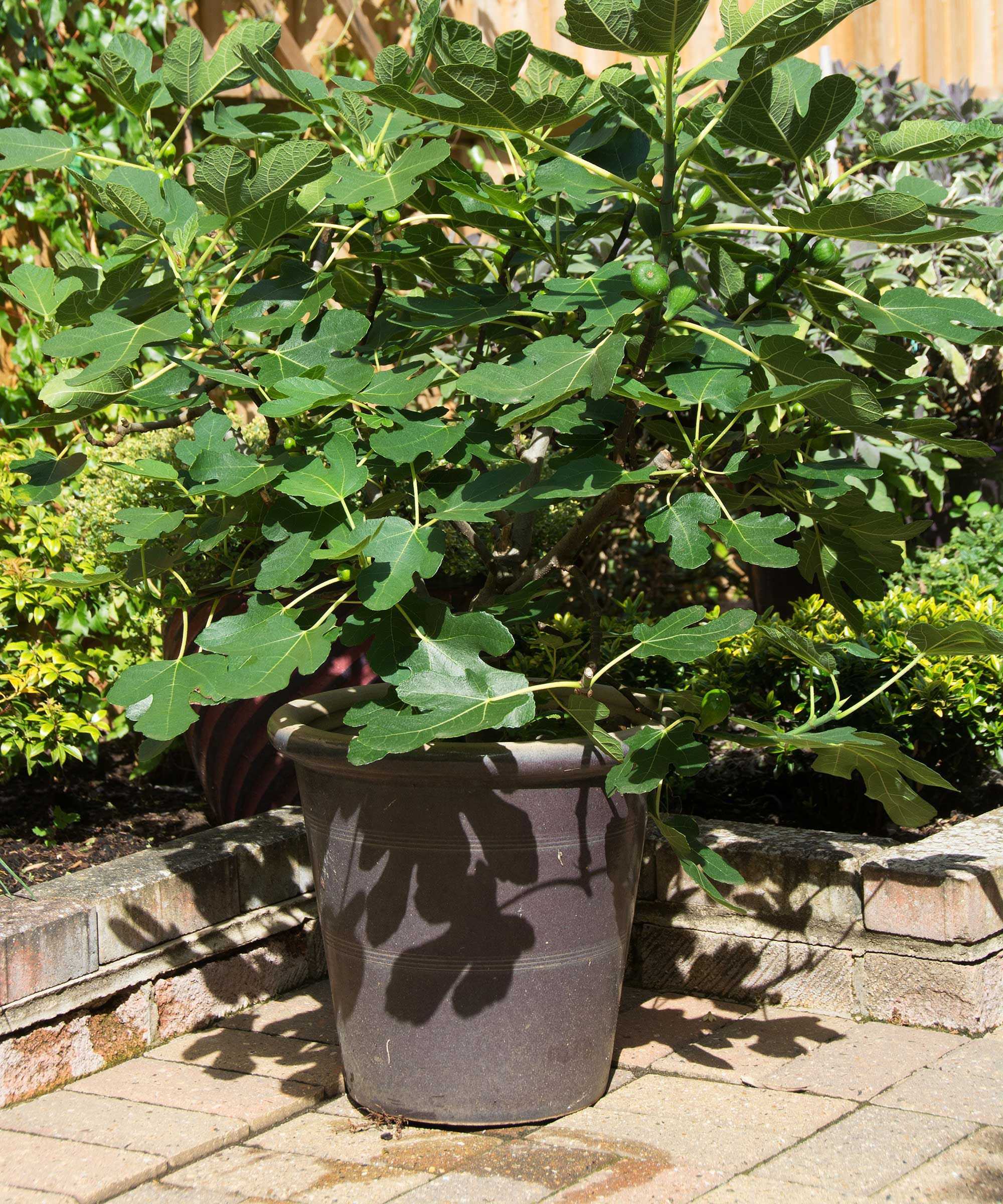
Figs are great for container growing as restricting their roots promotes better fruiting.
Keep them in a sunny, sheltered place. Fig trees need protection from winter weather, and growing them in pots means you can easily move them somewhere frost-free, such as a garage, until spring.
They need repotting every three years or so, until they reach the desired size. At this point, simply trim the rootball and refresh the potting soil instead.
The compact “Little Miss Figgy™”, available from Fast Growing Trees, or the popular “Brown Turkey” fig from Nature Hills, are good options to try.
What to shop

Price: $15.67
With over 36,000 5-star ratings on Amazon, this Miracle-Gro potting mix is a very popular pick for container gardening, and feeds plants with nutrients for up to six months.

Price: $22.99
This metal watering can from Yourjoy has a timeless look and a durable design, and features a removable spout. It's an essential for tending to your outdoor potted plants.

Price: $185.85
This contemporary planter from Wallowa is made from galvanized steel and includes drainage to reduce risks of waterlogging. The bronze-colored edging adds a stylish detail.
FAQs
Should you fertilize potted trees?
Most trees in containers will benefit from a feed now and again, to give their potting soil a boost in nutrients. A slow-release fertilizer, such as Osmocote Smart-Release Plant Food Plus from Amazon, applied using packet instructions during the growing season, is often the way to go.
A layer of organic mulch can also be beneficial for container-grown trees, which will add nutrients to the soil as it breaks down while helping to maintain moisture. Just remember to keep it a little way away from the main stem, to avoid risks of rotting.
Whether you're tending to the best outdoor potted plants or trees, note that containers dry out much quicker than the ground. Be sure to keep an eye on the soil, particularly in hot summers, and water when needed.
Should you prune potted trees?
Some light pruning may be in order, to keep your trees the desired shape and size. Always check the optimal time to do so – many trees, including acers, should be trimmed when they are dormant.
Remove only a small amount of healthy growth at one time to avoid stressing the tree, always cutting back to a side branch or healthy bud. Any dead and diseased branches can also be removed.
Looking for more small-space-friendly ways to update your yard in time for warmer weather? Our patio decor ideas will provide plenty of inspiration.

The garden was always a big part of Holly's life growing up, as was the surrounding New Forest, UK, where she lived. Her appreciation for the great outdoors has only grown since then; over the years, she's been an allotment keeper, a professional gardener, and a botanical illustrator. Having worked for Gardeningetc.com for two years, Holly now regularly writes about plants and outdoor living for Homes & Gardens.
In her spare time, Holly loves visiting local English gardens and is particularly fond of relaxed cottage-garden schemes. She also loves prairie-style planting – the tapestry effect of grasses mixed with drought-tolerant blooms never ceases to delight her. Always happiest around plants, when she isn't swooning over gardens, she's looking after her ever-growing collection of houseplants and arranging seasonal flowers in her apartment to paint.
